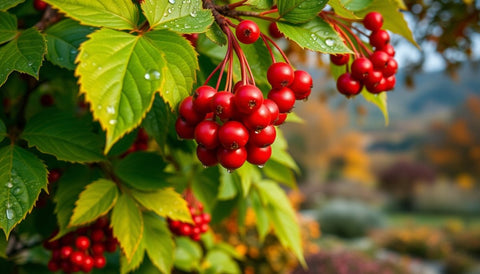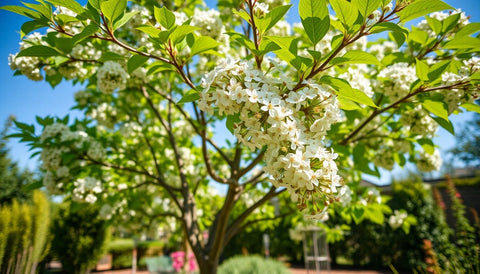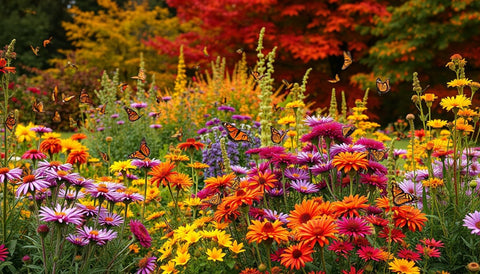By Plantology USA
Introduction
Viburnum is a versatile shrub that provides multi-season interest in any garden. One of its standout features is the vibrant berries that appear in the fall, enhancing your landscape while providing food for wildlife. This post will guide you through how to plant and care for Viburnum to enjoy beautiful fall displays of berries in your garden.

Section 1: Understanding Viburnum
What is Viburnum?
Viburnum is a large genus of shrubs, offering a variety of species that thrive in different garden conditions. With lush green leaves, beautiful spring blooms, and fall berries, Viburnum adds year-round beauty to any landscape. Common garden species include Viburnum trilobum (American Cranberrybush) and Viburnum dentatum (Arrowwood).
Benefits of Planting Viburnum
- Seasonal Beauty: Spring flowers followed by fall berries in striking red, blue, or black.
- Wildlife Attraction: Viburnum berries are a key food source for birds and pollinators.
- Environmental Benefits: Useful in stabilizing soil and preventing erosion in landscapes.
Section 2: Choosing the Right Viburnum
Popular Varieties for Fall Berries
Consider varieties like Viburnum trilobum (produces bright red berries) and Viburnum dentatum (produces blue-black berries) for dramatic fall color. Some varieties even have berries that can be used in jams or jellies.

Considerations for Selection
- Climate Zones: Ensure your chosen variety is suited to your hardiness zone.
- Space Requirements: Select species that fit your garden's available space.
- Garden Compatibility: Choose varieties that complement your existing plants and landscape design.
Section 3: Planting Viburnum
Best Time to Plant
Viburnum can be planted in spring or fall, but fall planting is recommended in warmer climates to allow the roots to establish before winter.
Site Selection
Viburnum thrives in full sun to partial shade. Make sure the site has well-drained soil and is not prone to standing water, as that can lead to root rot.
Soil Preparation
Prepare the soil by incorporating compost or organic matter to ensure it’s fertile and well-draining. A pH range of 5.5 to 7.0 is ideal for most Viburnum species.
Planting Procedure
Follow these steps for successful planting:
- Dig a hole twice as wide and as deep as the root ball.
- Place the plant in the hole, ensuring the top of the root ball is level with the soil surface.
- Backfill the hole with soil and water thoroughly.
- Mulch around the base to conserve moisture and regulate soil temperature.
Section 4: Caring for Viburnum
Watering and Fertilization
Water new plants regularly to keep the soil moist but not waterlogged. Mature Viburnum plants can tolerate dry spells but should be watered during extended droughts. Apply a balanced fertilizer in early spring to promote healthy growth.
Pruning and Maintenance
Prune Viburnum in late winter or early spring to shape the plant and remove dead or diseased branches. Pruning encourages better airflow, reducing the risk of disease.
Pest and Disease Management
Viburnum can be affected by aphids, scale, and powdery mildew. Organic treatments like horticultural oil or insecticidal soap can manage most pests effectively. Ensure good air circulation and avoid overwatering to prevent fungal diseases.
Section 5: Enjoying Your Viburnum
Using Viburnum in Garden Design
Viburnum shrubs can serve as focal points in a garden or as part of a mixed border. Their fall berries add texture and color, complementing other fall plants like asters and ornamental grasses.

Harvesting Berries
If your Viburnum produces edible berries, you can harvest them for making jams or jellies. Birds will also appreciate the food source in late fall.
Conclusion
Viburnum offers a great way to add fall interest to your garden while benefiting local wildlife. By choosing the right variety and following best planting practices, you’ll enjoy vibrant berries every autumn. Happy planting!































Comments (0)
There are no comments for this article. Be the first one to leave a message!